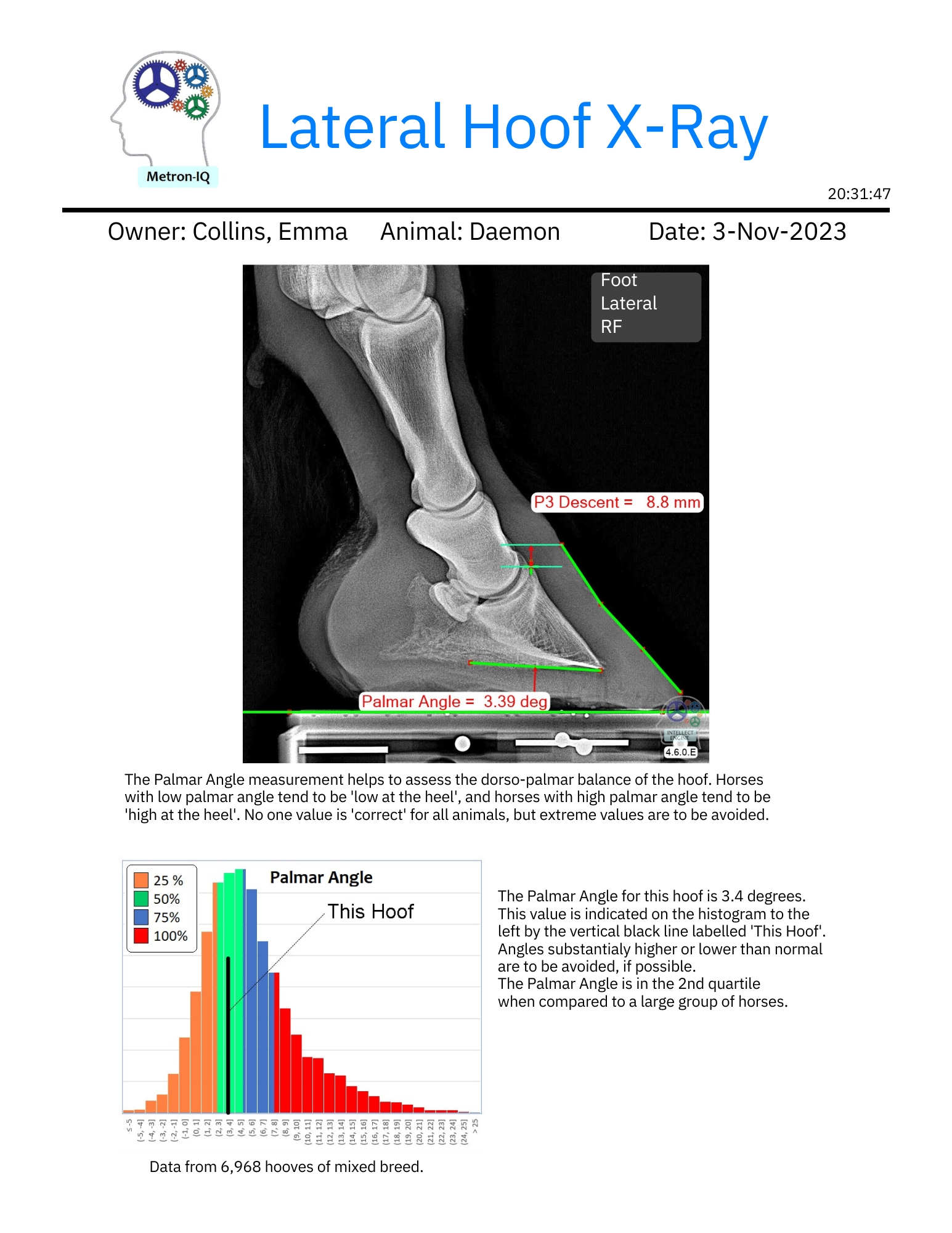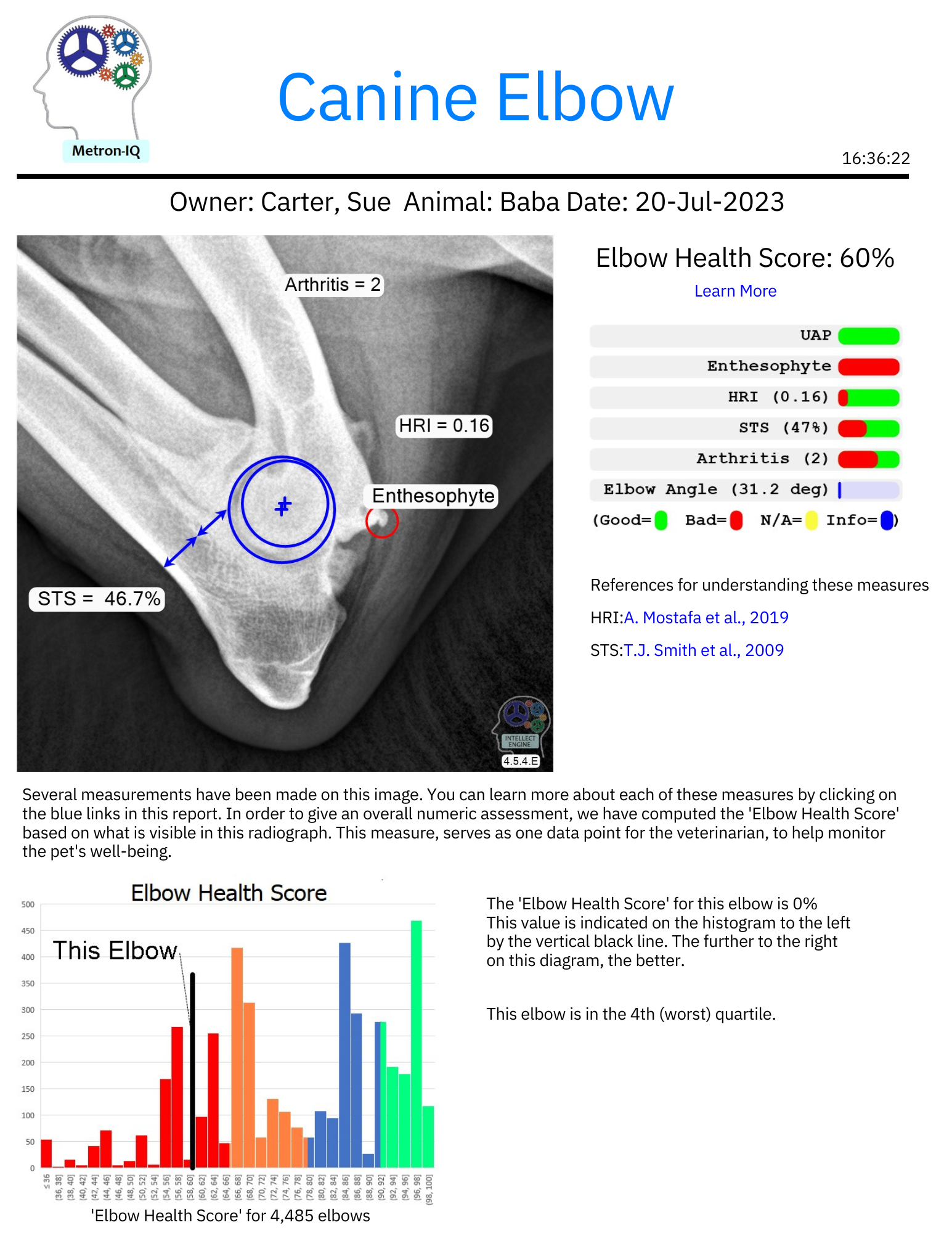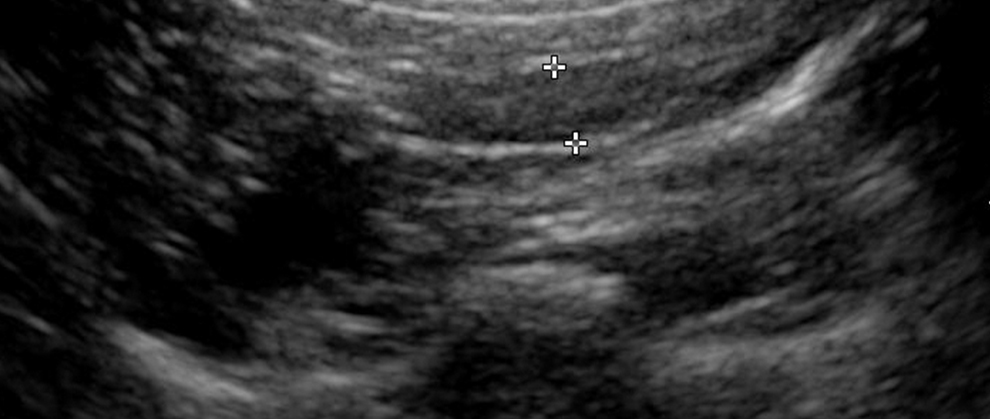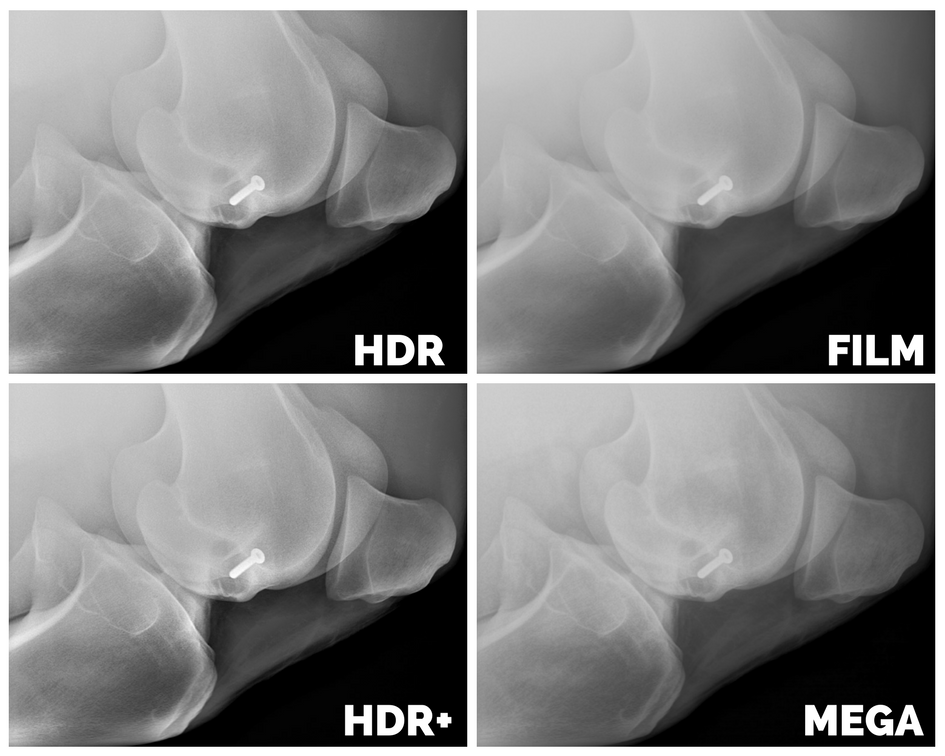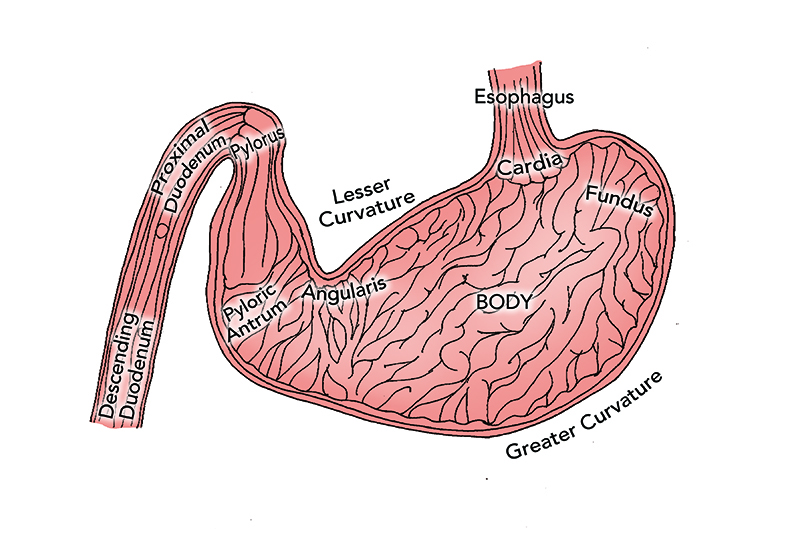Intelligent Digital Radiography For Equine Veterinarians
Are you an equine veterinarian struggling to find a balance between back-to-back exams and complex cases?
When conducting radiographic studies, adding tedious manual processes to a stacked schedule can be frustrating and stall diagnostics.
Vetel’s digital radiography systems utilize cutting-edge Artificial Intelligence software grounded in evidence-based practices to simplify your diagnostic process.
Taught from a database of thousands of real patient studies, our intelligent networks are meticulously engineered to analyze and identify significant morphological deviations with 99.8% accuracy.
Vetel digital radiography systems can generate automatic measurements and concise PDF reports summarizing key aspects of

